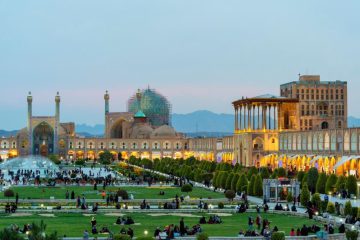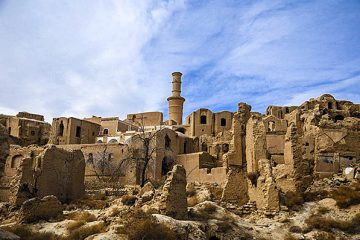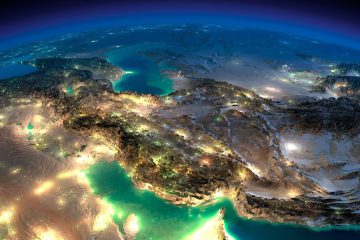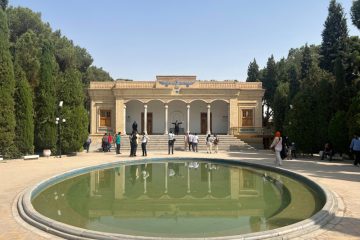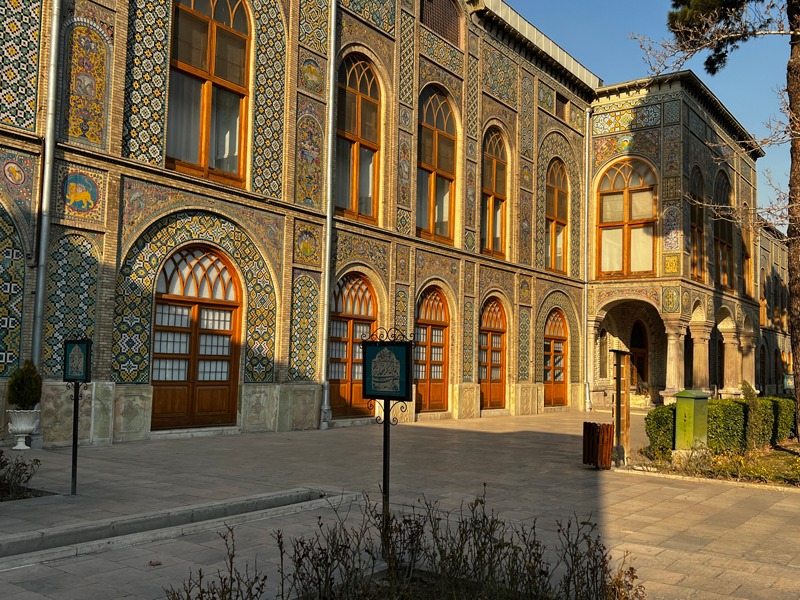
Top 10 Best Places to Visit in Iran
Iran boasts a rich civilization that’s like a treasure chest waiting to be explored! So, choosing the best places to visit in Iran may take much work. From its captivating art and breathtaking architecture to its enchanting poetry, there’s so much to uncover.
But here’s the best part: Iran offers a rare opportunity to experience a way of life that’s disappearing in today’s modern world. And the surprises don’t stop there – beneath its surface lie archaeological wonders and cultural treasures spanning over 10,000 years of history!
To make sure you don’t miss any of the highlights, here’s a simple guide to the best places to visit in Iran:
Top 10 Best Places to Visit in Iran
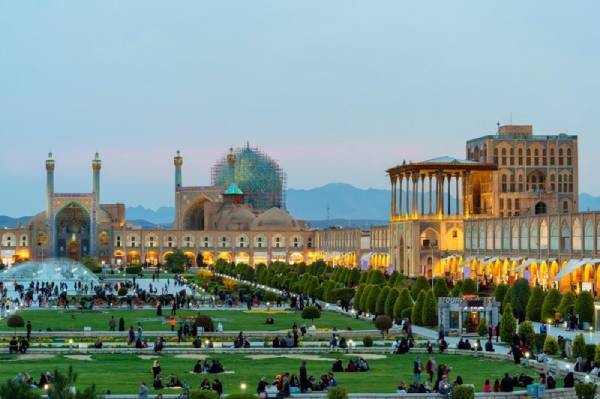
1. Naqhsh-e Jahan Square, Isfahan
Isfahan, home to some of the world’s most breathtaking Islamic monuments, boasts Royal Square, also known as Naqhsh-e Jahan Square, among Iran’s best places to visit. Serving as the symbolic heart of the Safavid Empire, this immense rectangular square, measuring 160 by 512 meters, ranks as the second largest globally. Surrounded by turquoise-domed mosques, a palace supported by plane tree columns, and a bustling covered bazaar, it stands as a marvel of Islamic architecture. Against the backdrop of domes, minarets, and the lively bazaar, Royal Square conjures images of the enchanting East.
Throughout history, the square has hosted various national and governmental festivals, as well as polo games, with stone goalposts still standing at its north and south ends. Surrounding the square are two-story arcaded structures housing the grand bazaar of Isfahan, one of the oldest and largest covered bazaars in the Middle East. Recognized as a UNESCO World Heritage Site, Royal Square epitomizes Iran’s rich cultural heritage.
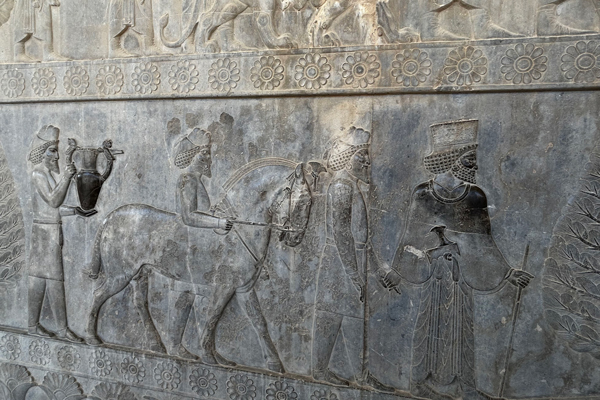
2. Persepolis, Shiraz
Persepolis, also known as Takht-e Jamshid or Parseh, stands as one of the world’s most impressive archaeological marvels. Founded by Darius I in 518 B.C., it served as the ceremonial capital of the Achaemenid Empire for over 200 years until its downfall at the hands of Alexander the Great in 330 B.C.
Designed as a grand showcase and center for royal receptions and festivals, Persepolis hosted representatives from across the Persian Empire each spring, who gathered to pay tribute to the King of Kings.
Today, the remnants of Persepolis include the iconic Gate of All Nations, the majestic ruins of palaces adorned with colossal stone columns, and captivating capitals depicting powerful and mythical creatures. Intricate bas-reliefs and inscriptions embellish facades and staircases, while stone doors and window jambs add to the site’s allure. Among the notable features are the tombs of Artaxerxes I and Artaxerxes II, offering a glimpse into the ancient splendor of this once-magnificent capital.
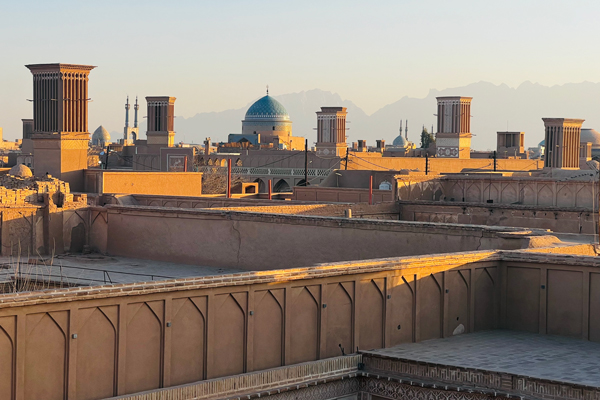
3. The old town of Yazd
The historic city of Yazd, nestled amidst two deserts, stands as a UNESCO World Heritage Site, boasting unparalleled examples of traditional Iranian mud brick architecture. Its winding alleys are adorned with numerous Badgirs (windtowers), symbolizing its ancient charm. Yazd has long been a vital hub along the caravan trail connecting Western and Eastern Iran, with a vibrant Zoroastrian community adding to its cultural richness.
Exploring the old city of Yazd is like stepping back in time, with thousands of ancient dwellings tucked behind imposing mud walls. Visitors can discover a wealth of historical sites such as the Jame mosque, Alexander Prison, and hidden water reservoirs, courtyards, and teahouses. The streets are lined with shops selling crafts, and many houses have been transformed into enchanting hotels, making Yazd one of Iran’s top destinations for travelers seeking an authentic and unforgettable experience.
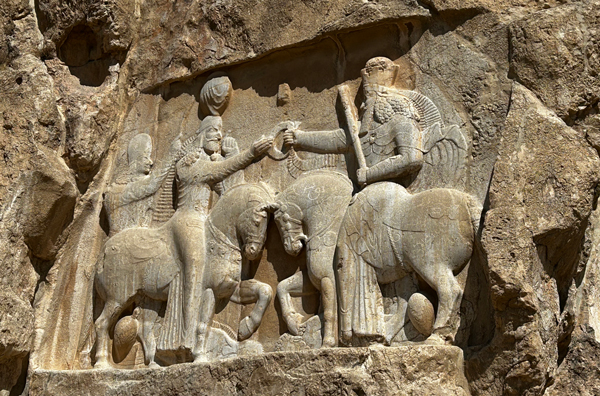
4. Naqash-e-Rostam, Shiraz
Have you ever heard of Naqsh-e-Rostam? Nestled just a stone’s throw from Persepolis, Naqsh-e-Rostam, also known as Iran’s Necropolis, unveils a mesmerizing sight: four colossal rock-cut tombs fashioned in the likeness of Greek crosses. Crafted to enshrine the remains of Darius the Great and his three successors, these tombs, dubbed the Persian crosses, boast entrances at the heart of each cross, leading to intimate chambers where kings once rested in sarcophagi.
Of these four grand tombs, only Darius the Great bears a distinctive cuneiform inscription, adding an air of mystery and intrigue to the ancient site.
Fast forward nearly eight centuries and the cliffs of Naqsh-e Rustam witness the rise of the Sassanian monarchs Ardeshir I and Shapur I. Eager to immortalize their reign, they commission elaborate rock panels beneath the towering Achaemenid tombs. Here, scenes of triumph and investiture come to life in intricate bas-reliefs, capturing pivotal moments in history. Among them, a poignant carving depicts the defeated Roman emperor Valerian kneeling before the triumphant Shahpur I, offering a unique glimpse into the clash of civilizations at this legendary site.
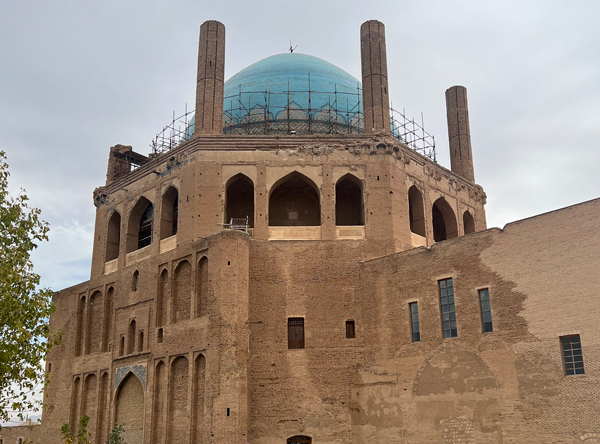
5. Soltaniyeh Dome, Zanjan
nestled in the picturesque Zanjan Province, you’ll stumble upon the breathtaking Soltaniyeh Dome. It’s not just any dome—it’s a masterpiece, housing the Mausoleum of Öljeitü, also known as Sultan Muhammad Khodabandeh, a Mongol ruler of legendary status. And let me tell you, this place is no ordinary spot—it’s been hailed as “one of Persia’s supreme achievements” by none other than Professor Arthur Upham Pope.
Now, let’s rewind to between 1302 and 1312 AD, a time when Soltaniyeh was buzzing as Iran’s capital. That’s when they built this architectural marvel, earning it the title of the oldest double-shell dome in Iran and the world’s largest brick dome. Can you believe it?
Just imagine standing beneath its towering 50-meter dome, adorned with shimmering turquoise-blue faience. And those minarets? Eight of them, standing tall and proud, though they’ve seen better days.
Now, as you step inside, prepare to be dazzled. The walls are adorned with intricate mosaics, faience, and plasterwork, each telling a story of craftsmanship and dedication.
But here’s the real kicker: the iwans. They’re like a canvas, with white inscriptions popping against a backdrop of vibrant blue. And don’t even get me started on the windows—bronze screens, ornate knobs, some even set with gold and silver.
So, next time you’re in Zanjan Province, make sure to swing by the Soltaniyeh Dome. Trust me, it’s more than just a tourist spot—it’s a journey through history and culture that you won’t soon forget.
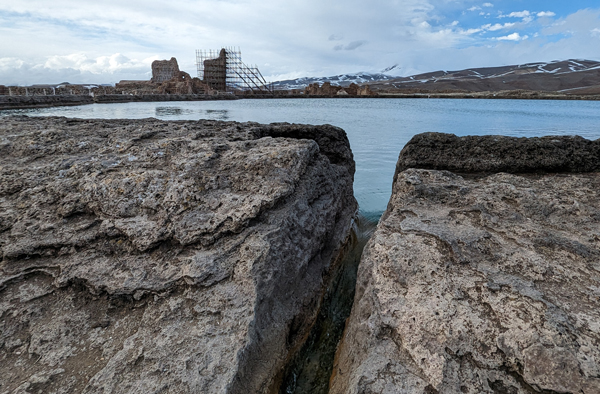
6. Takht-e-Soleyman, Takab
Nestled high in the mountains of Iran’s Azerbaijan province, the UNESCO World Heritage Site of Takht-e-Soleyman, or Solomon’s Throne, is a captivating blend of history and natural beauty. Once a revered religious hub of the Sasanian Empire, it housed the esteemed Zoroastrian fire temple, Azar Goshnasb. Here, the Warrior’s Fire, one of the most sacred flames in Zoroastrianism, burned brightly, drawing pilgrims and kings alike seeking divine favor
Imagine this: an oval platform, stretching 350 meters by 550 meters, rises dramatically 60 meters above the valley below. At its heart lies a small artesian well, its waters forming a deep, crystalline lake that adds to the site’s mystique. From here, gentle streams flow, nourishing the surrounding lands and enriching the fertile landscape.
But the site’s allure doesn’t end there. In the 13th century, Takht-e Soleiman served as a retreat for the Mongol Ilkhanid khans. Their hunting palace, now weathered by time, lies beneath a modern roof, housing an eclectic collection of artifacts—amphorae, column fragments, and even ancient gas pipes. It’s a testament to the site’s rich and diverse history, a place where the past and present intersect in a tapestry of intrigue and wonder.

7. Persian Gardens, Iran
The Persian Garden, a pinnacle of Iranian culture, embodies the essence of Iranian philosophy and aesthetics. Characterized by meticulous geometric designs, it reflects the intricate patterns of the Iranian worldview, with the “Chahar Bagh” layout symbolizing the Islamic-Iranian quaternary perspective.
At its heart lies the historic Shapouri House in Shiraz, a testament to the enduring legacy of Persian garden architecture. Over the years, scholars have delved into the diverse forms and layouts of Iranian gardens, with the “Chahar Bagh” pattern emerging as the archetype, influencing garden design across the country.
But let’s rewind to the roots of the Persian Garden. Archaeological evidence traces its origins to Pasargadae, where Cyrus the Great established the first “Four Gardens” (Chahar Bagh) in the form of a paradise on earth. This ancient site, dating back to 550 BC, set the stage for the evolution of Persian garden design.
Fast forward to the present day, and the UNESCO World Heritage List showcases a tapestry of Persian gardens, each with its own story to tell. From the majestic Chehel Sotoun Palace Garden in Isfahan to the lush Eram Garden in Shiraz, these gardens are a living testament to Iran’s rich cultural heritage.
Elements like high walls, four-section divisions, and the use of straight lines characterize Iranian gardens, creating a harmonious blend of architecture and nature. Trees like black poplar and cypress provide natural shade, while water features like streams and fountains add to the tranquil beauty of these gardens.
In essence, Persian gardens are a celebration of human ingenuity and harmony with nature, offering a glimpse into Iran’s cultural tapestry through the ages. As these timeless landscapes continue to inspire awe and admiration, they remind us of the enduring legacy of Persian craftsmanship and creativity.
Here are the remarkable Persian gardens listed as UNESCO World Heritage Sites:
Pasargadae Garden – Fars Province (550 BC)
Chehel Sotoun Palace Garden – Isfahan (17th century)
Eram Garden – Shiraz (19th century)
Fin Garden – Kashan (16th century)
Prince Garden – Mahan (19th century)
Dowlat Abad Garden – Yazd (18th century)
Akbariyeh Garden – Birjand (18th century)
Pahlavan Pour Garden – Mehriz (19th century)
Abbas Abad Garden – Behshahr (17th century)
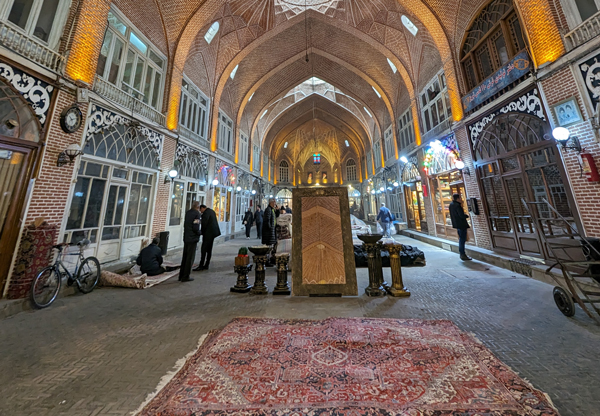
8.Tabriz Bazaar, Tabriz
The next destination on our list of the best places to visit in Iran is in Tabriz. When it comes to traditional Iranian Bazaars, Tabriz immediately comes to mind. It’s renowned as Iran’s premier marketplace, boasting the title of the largest roofed bazaar globally.
Situated along the ancient Silk Road, Tabriz served as a pivotal point connecting East and West for centuries. Its bazaar, once the city’s main gates, holds a rich history shrouded in mystery regarding its exact origins.
The Tabriz Covered Bazaar, also known as Tabriz Grand Bazaar, stands as the world’s largest covered market and the largest brick complex. Here, you can immerse yourself in a vibrant array of goods, from exquisite hand-woven Persian carpets to fine leather products, spices, nuts, fabrics, and handicrafts, all while marveling at its remarkable architecture.
Spanning approximately one square kilometer, the bazaar encompasses 11 corridors, 20 rows, 25 timchehs, 35 houses, and an astounding 6,500 shops and stalls. Just envision the bustling activity and countless visitors who flock here each day—it’s truly remarkable!
Recognized as a UNESCO World Heritage Site, the Tabriz Grand Bazaar stands as a testament to Iran’s rich cultural heritage and enduring legacy in commerce and craftsmanship.
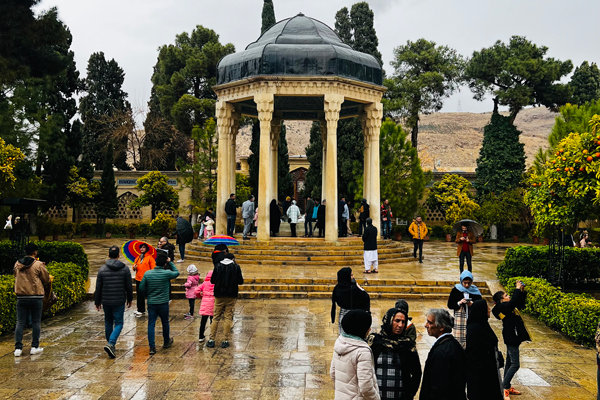
9. Tomb of Hafez, Shiraz
Hafez, also known as Hafiz, whose full name is Shams al-Dīn Muḥammad Ḥāfiẓ, lived from 1326 to 1389/90 in Shiraz, Iran, and is celebrated as one of the nation’s most revered poets.
Having received a classical religious education, Hafez was well-versed in Qurʾānic teachings, earning him the title “Hafez,” meaning one who has memorized the Qurʾān. Alongside his theological pursuits, he delved into Sufism, the mystical Islamic movement advocating for spiritual union with the divine.
Hafez’s poetic mastery shines through his principal verse form, the Ghazal, a lyrical poem typically comprising 6 to 15 couplets united by subject and symbolism rather than a linear flow of ideas. While traditional ghazals often explored themes of love and wine, Hafez infused them with freshness and subtlety, transcending formalism. Notably, he pioneered the use of ghazals over odes in panegyrics, dedicating minimal lines to praise and reserving the rest for his profound reflections.
His poetry, resonant with colloquial yet melodious language, shunned artificiality in favor of relatable imagery and proverbial expressions. Hafez’s work embodies a deep love for humanity, disdain for hypocrisy, and a profound connection to the mystical pursuit of divine union. His universal themes have garnered admiration worldwide, evident in the numerous translations of his Divan, a collection of his poems, by esteemed translators such as Gertrude Bell and H. Wilberforce Clarke.
Today, Hafez’s tomb in Shiraz stands as a testament to his enduring legacy and profound influence on Persian literature and beyond. You want to take advantage of this one of the best places to visit in Iran.
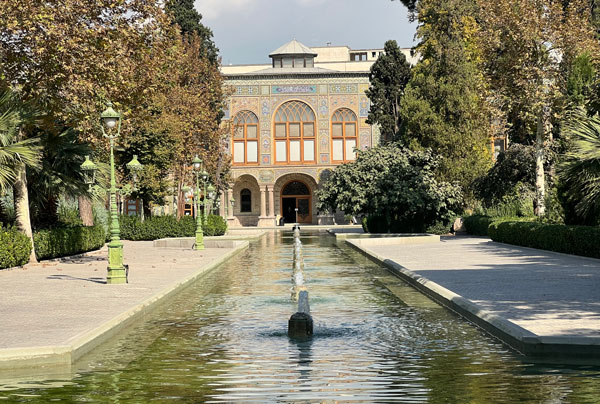
10. Golestan Palace, Tehran
The last place of the best places to visit in Iran is located in the capital. Tehran, with its rich history as the capital for two centuries, stands out among other cities, boasting a collection of opulent mansions and museums. Among these treasures, Golestan Palace shines as one of the most exquisite buildings, steeped in the significant historical events of Iran’s Qajar period.
Originally, Golestan Palace traces its roots back to the reign of Shah Abbas Safavid in the late 16th to early 17th century. At that time, Tehran was a humble village near the ancient city of Rey, prized for its pleasant climate and proximity to summer retreats like Shemiranat and Lavasan. The citadel, surrounded by plane trees, served as a royal residence during this era.
As the Safavid and Afshari dynasties waned, the palace complex saw sporadic use by figures like Karim Khan Zand, who added the iconic Karim Khani Nook to the site. However, it wasn’t until the ascension of Agha Mohammad Khan and the establishment of the Qajar dynasty that Tehran was formally declared the capital of Iran. Golestan Palace then became the primary residence of the Qajar kings, hosting coronations and other ceremonial events that shaped the nation’s history.
Today, Golestan Palace stands as a testament to Iran’s rich heritage, welcoming millions of visitors each year to explore its grandeur and immerse themselves in the legacy of bygone eras.

